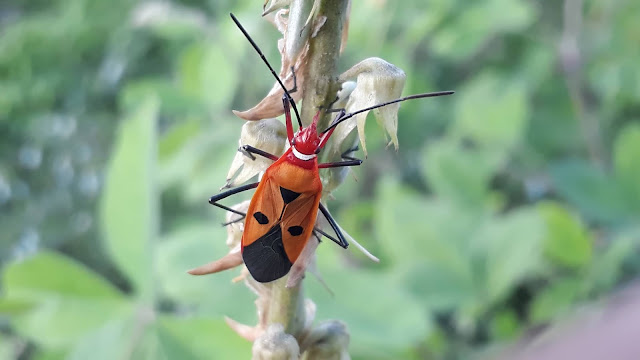Common Mormon Butterfly (Papilio polytes romulus): Scientific Classification, Habit and Habitat, Food Habit, Identifying Characters
Common Mormon Butterfly (Papilio polytes
romulus): Scientific Classification, Habit and Habitat, Food Habit, Identifying Characters
Scientific
Classification
Kingdom: Animalia
Phylum: Arthropoda
Class: Insecta
Order: Lepidoptera
Family: Papilionidae
Genus: Papilio
Species: polytes
Subspecies: romulus
Habit
and Habitat:
- Common mormon butterflies are adaptable and found in tropical and subtropical areas, open forests interspersed with meadows, tropical rainforests, agricultural fields, suburban gardens, and even in large cities.
- It cannot fly in winds that blow more quickly than 5 to 10 m/s; thus, they cannot inhabit windy areas that lack sheltering undergrowth. Common mormon butterflies need access to water or moist earth.
Food Habit: The adult Common Mormon is a Nectarivore and has a long
proboscis that permits it to feed on flowers having long corollar tubes. It is
particularly fond of Lantana, Jatropha, Ixora, and Mussaenda in
gardens. In the forests, the common Mormon remains low keeping within ten feet
off the floor and its prefer to visit Asystasia, Peristrophe, and Jasminum
for nectar.The Common Mormon caterpillar feeds on leaves of Aegle marmelos
(bael), Atalantia racemosa, Citrus spp., Glycosmis arborea,
Murraya koenigii (curry leaf), Murraya paniculata.
Identifying
Characters:
- This butterfly is considered as the classic example of Batesian mimicry in which edible species resemble unpalatable butterflies in order to escape being eaten by predators.
- This female form mimics the crimson rose and is common over its range.
Adult
Male
Upperside black. Fore wing : cell and apical area with
not very prominent irrorated lines of pale yellowish scales, and admarginal
white spots along the termen. Hind wing : a transverse discal series of
elongate white spots in the interspaces from the dorsum to 7, these spots
divided by the black veins and succeeded by diffuse ill-defined sparse blue
scaling on the postdiscal area ; an obscure spot of a deeper black than the
groundcolour at the tornal angle surmounted by a lunule of blue scales.
Underside similar ; ground-colour of a duller more opaque black.
Adult
Female
Upperside fuliginous-black on fore, somewhat
darker and velvety on the hind wing. Fore wing crossed from the middle of the
cell obliquely to the tornal angle by a broad white band, the margins of the band ill-defined; this is
followed by an ill-defined white patch beyond the apex of the cell. Hind wing: the apex of cell and elongate marks from base of interspaces 2, 3, 4, and 5 white ;
lower half of interspace 1 dark red irrorated with blue scales and with a
superposed black tornal spot; the red extends into interspace 2, below the
elongate white mark; finally, a complete subterminal transverse curved series
of red lunules, and admarginal paler red spots in the posterior interspaces and
a round red spot at the apex of cell Underside similar ; a complete series of
admarginal spots along the termen of the hind wing, the anterior spots white.
Antennae, head, thorax and abdomen black ; beneath, the abdomen with lateral
rows of white specks. Ordinarily the
cell of the hind wing is uniform black to the apex, and the number of elongate
white markings in the interspaces beyond vary from 2
Eggs
The eggs are laid singly on top of the leaves. They are
round in shape and yellow to light orange in colour.
Caterpillar
The first few instars of the caterpillar closely resemble
those of the lime butterfly. The later instars become dark green in colour.
There is a transverse black band with an eye-spot on each side on the 4th and
5th segments. The common Mormon caterpillar also has a black and white oblique
band on the 8th and 9th segments. It has deep red osmeterium and a yellowish-brown head.
Pupa
The
pupa is located on the underside of leaves and twigs. The pupa is light green and
unmarked. It has two projections to the front on its head and also one on its
thorax. It closely resembles the lime butterfly pupa but can be distinguished
by the projections on the head which have a deeper indentation between them and
the abdomen which protrudes to a small point on each side.




Comments
Post a Comment